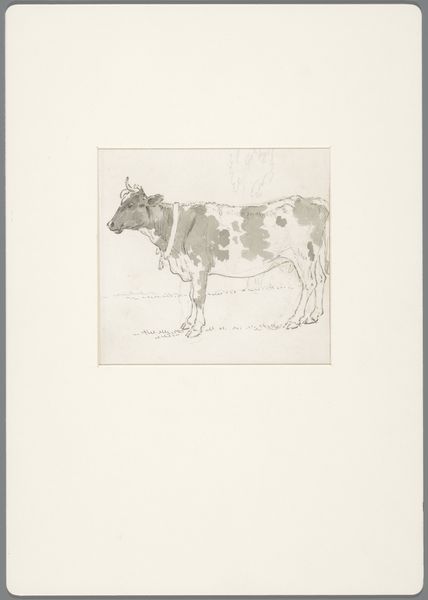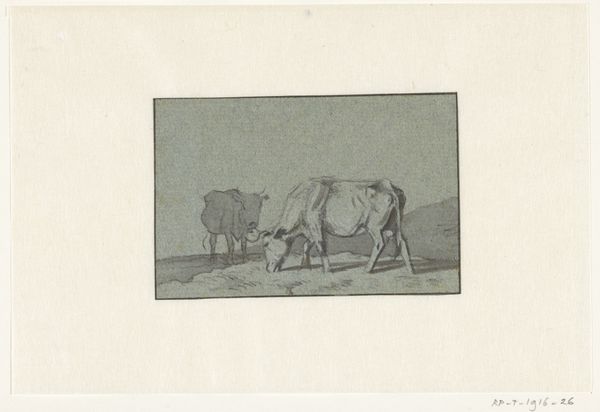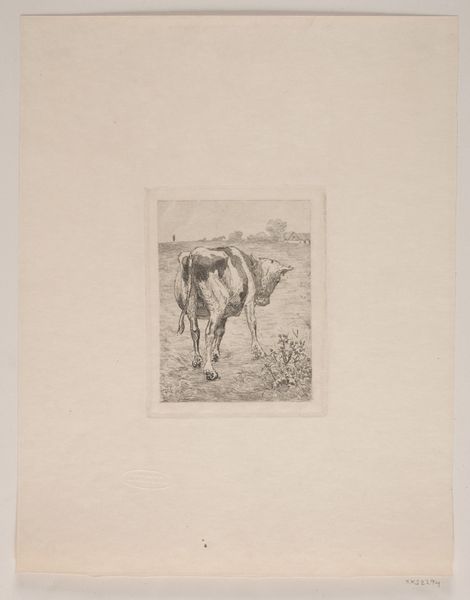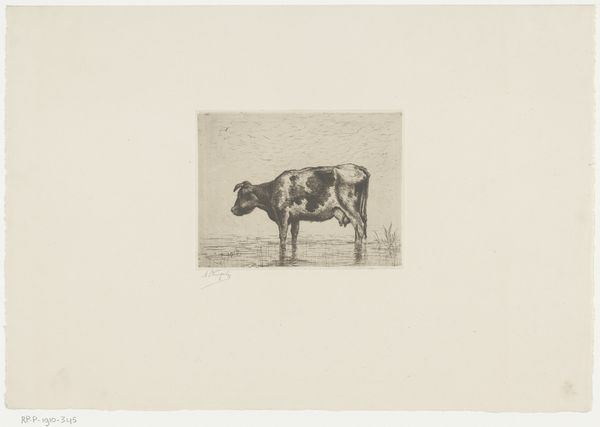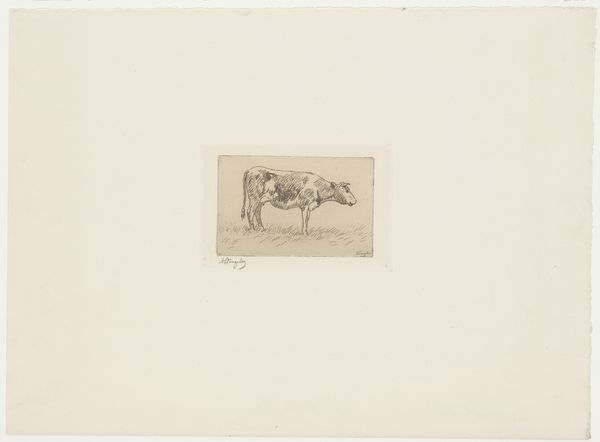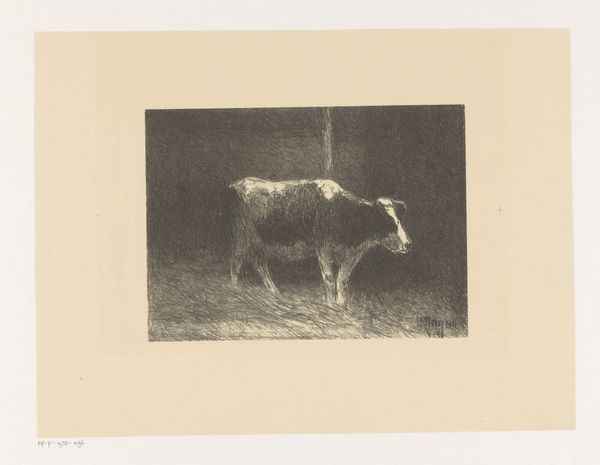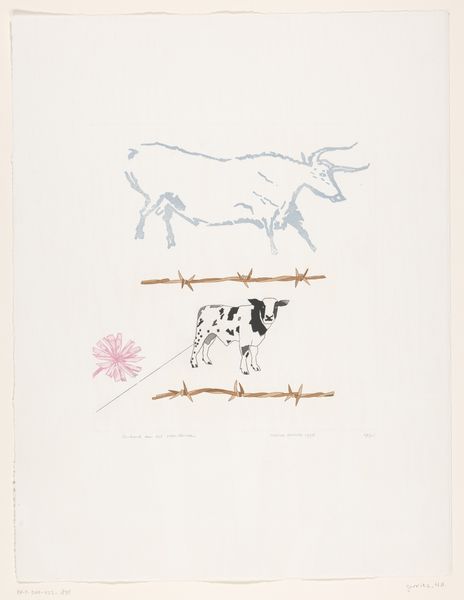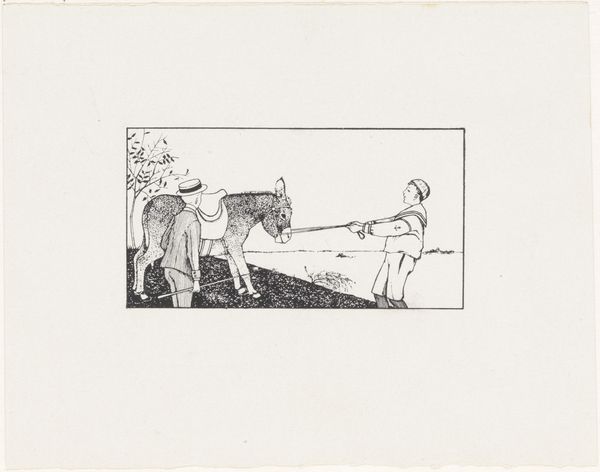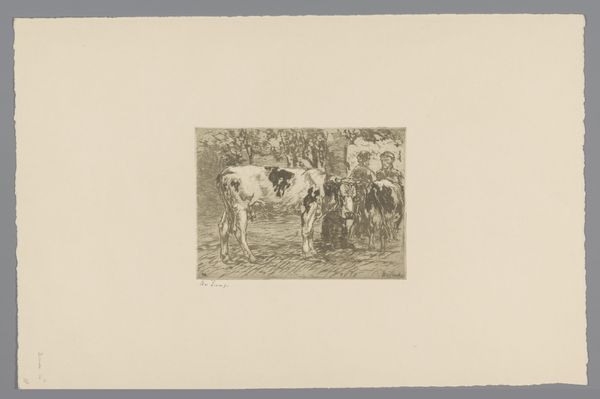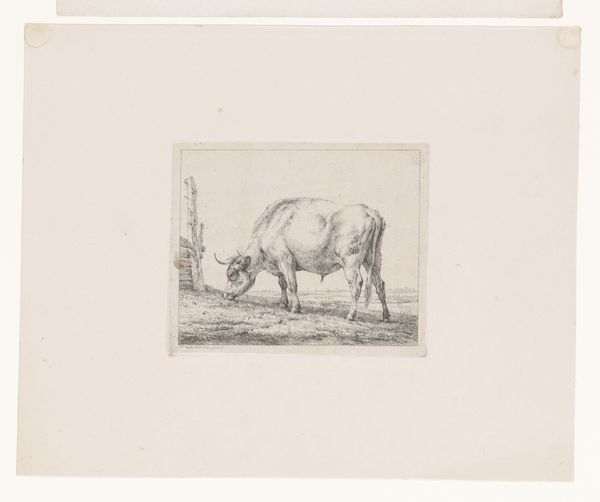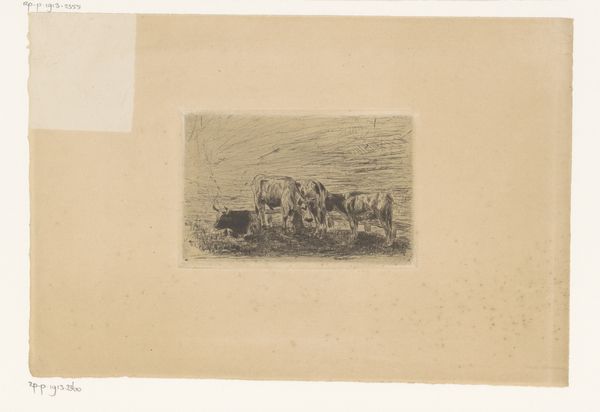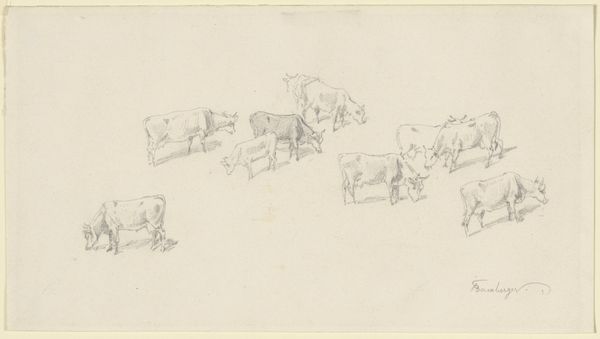
drawing, pencil
#
drawing
#
neoclacissism
#
landscape
#
pencil
#
genre-painting
#
realism
Dimensions: height 102 mm, width 144 mm
Copyright: Rijks Museum: Open Domain
Editor: So, here we have "Two Cows in a Landscape," a pencil drawing from somewhere between 1750 and 1809, by David Alphonse de Sandoz-Rollin. There’s something almost serene about it, despite its simplicity. How do you interpret this work? Curator: I see more than just a tranquil pastoral scene. Consider the context: this drawing emerges during a period of significant social upheaval, bridging the Rococo and Neoclassical eras. Representations of rural life, especially of animals central to agriculture, were often imbued with ideologies about the 'natural' order and the social hierarchy that depended on it. Does the rendering of these cows challenge or reinforce these ideals? Editor: I see what you mean. The realism hints at the dignity of labor, but it also might mask inequalities... Were depictions of farm animals ever explicitly political? Curator: Absolutely! Think about the art of the Dutch Golden Age, which influenced Sandoz-Rollin. Artists used farm animals to represent national identity and prosperity, which sometimes romanticized colonial exploitation and class structures. Looking closer, consider how Sandoz-Rollin’s rendering either conforms to these earlier styles or begins to pull away from them. Do you see an idealized vision or a more realistic portrayal, considering what "realism" might have meant in that context? Editor: It feels like he is trying to strike a balance – a romanticized natural order. Something about the scale feels conservative, rather than revolutionary. Curator: Precisely! This observation invites us to interrogate how even seemingly benign subjects like cows can become implicated in broader conversations about power, labor, and social commentary. Editor: It makes you think twice about pastoral scenes. There is a lot more than first meets the eye, especially when considered against history. Curator: Exactly. Art becomes a mirror reflecting the complex realities of its time.
Comments
No comments
Be the first to comment and join the conversation on the ultimate creative platform.
